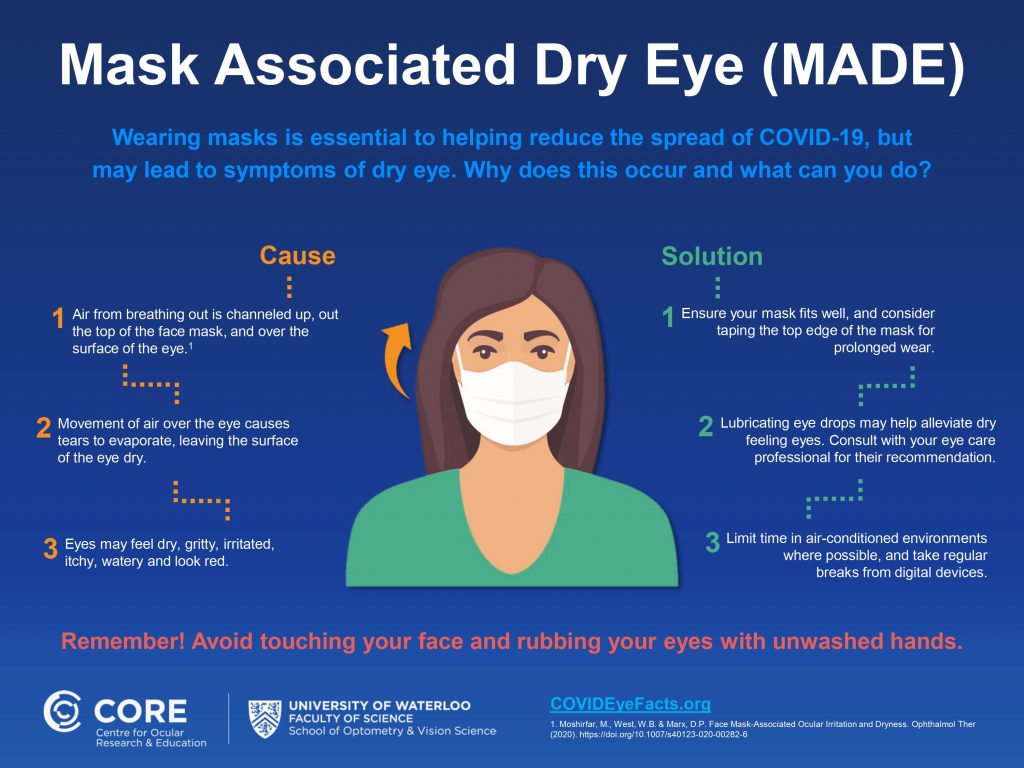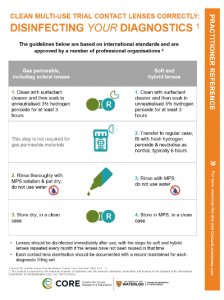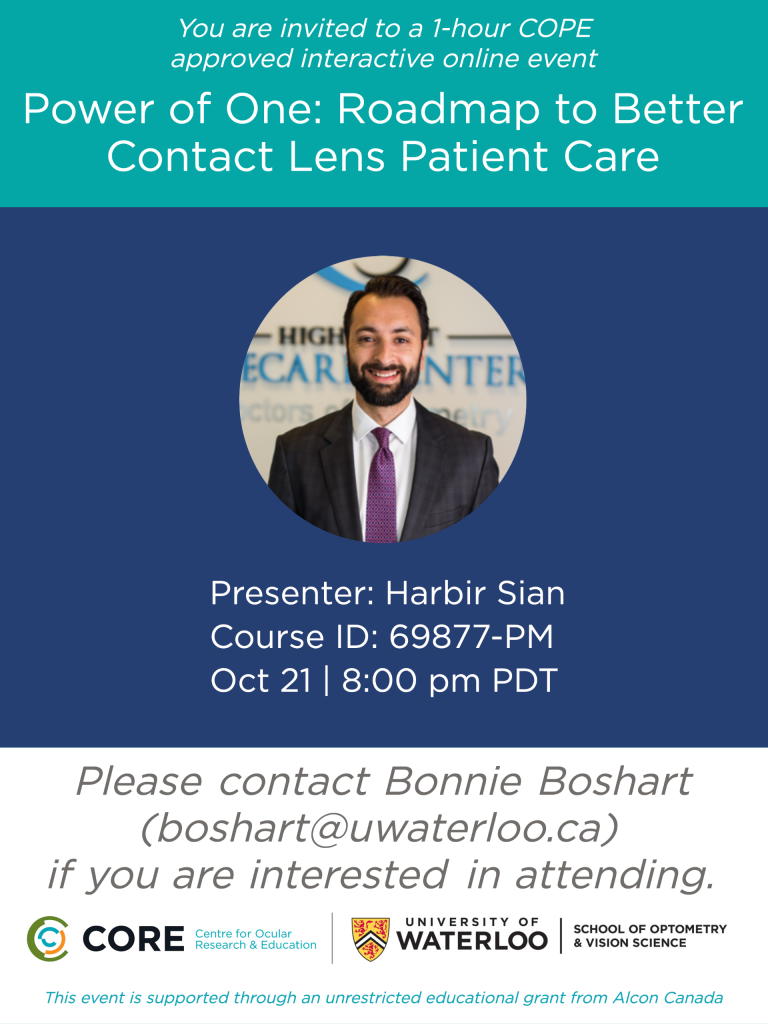Companion Feature Article for The Conversation Answers Frequent Patient Questions; Now Reaching Millions Worldwide through Mainstream Media
WATERLOO, Ontario, March 10, 2021—As the global COVID-19 pandemic enters its second year, a new initiative from the Centre for Ocular Research & Education (CORE) is addresses questions that may keep people from seeking proper eye care.
CORE has designed two infographics that eye care professionals can incorporate into ongoing patient communications, such as through newsletters, email campaigns, website content, social media and in-office displays. Created to be quickly read and easily understood, one infographic focuses on reasons to urgently contact an eye doctor. The other reassures patients of common steps being taken to ensure safety during in-office exams. Both are available for download from COVIDeyefacts.org and may be used at no cost if the content is not altered.
In conjunction, CORE Clinical Scientists Alison Ng, PhD, BSc(Hons), MCOptom, FAAO, and Mike Yang, OD, BSc, FAAO, have authored a consumer-facing feature story in collaboration with The Conversation, the non-profit, independent news organization that carries content from academic experts. “Why You Shouldn’t Neglect Eye Care During the COVID-19 Pandemic” is being distributed to major mainstream news outlets around the globe. The story has already been published by high visibility sources including Yahoo! News, The National Post, and MSN.
“Like many of our peers worldwide, CORE’s optometrists and clinical scientists have been hearing people’s confusion and concerns about their eyes in relation to COVID-19. Addressing the most frequent should help patients and their families maintain healthy vision while remaining safe,” said Dr. Ng. “Through our new infographics and feature story, we hope that eye care professionals will be able to spread the word even further in their communities.”
CORE has been one of the most prominent and cited voices regarding ocular health during the pandemic, including leading efforts in mid-2020 to combat misinformation regarding COVID-19 and contact lens wear. The group was also responsible last year for bringing global professional and consumer attention to mask associated dry eye (MADE). More information regarding these programs and the new initiative are available at COVIDeyefacts.org.
###
About the Centre for Ocular Research & Education (CORE)
The Centre for Ocular Research & Education (CORE) – formerly known as the Centre for Contact Lens Research – was established in 1988 at the University of Waterloo’s School of Optometry & Vision Science. Over the next three decades, the organization evolved from a three-person operation into a thriving hub of basic and applied research, collaborating with sponsors, agencies and academia on advanced biosciences, clinical research and education. Its uncompromising independence and results of the highest quality have been at the heart of many of the most prominent advances in eye health. Today, its approximately 50-person team serves a range of ophthalmic sectors, including medical devices, ocular pharmaceuticals, digital technology and others, with a focus on the anterior segment. For more information, please visit core.uwaterloo.ca.
MEDIA CONTACTS
Aimee J. Lewis or Mike McDougall, APR, Fellow PRSA
McDougall Communications for CORE
aimee@mcdougallpr.com +1.585.414.9838 | mike@mcdougallpr.com +1.585.434.2150














 Spotlighting advice that is always necessary yet elevated in the COVID-19 climate of ensuring safety, a downloadable
Spotlighting advice that is always necessary yet elevated in the COVID-19 climate of ensuring safety, a downloadable 